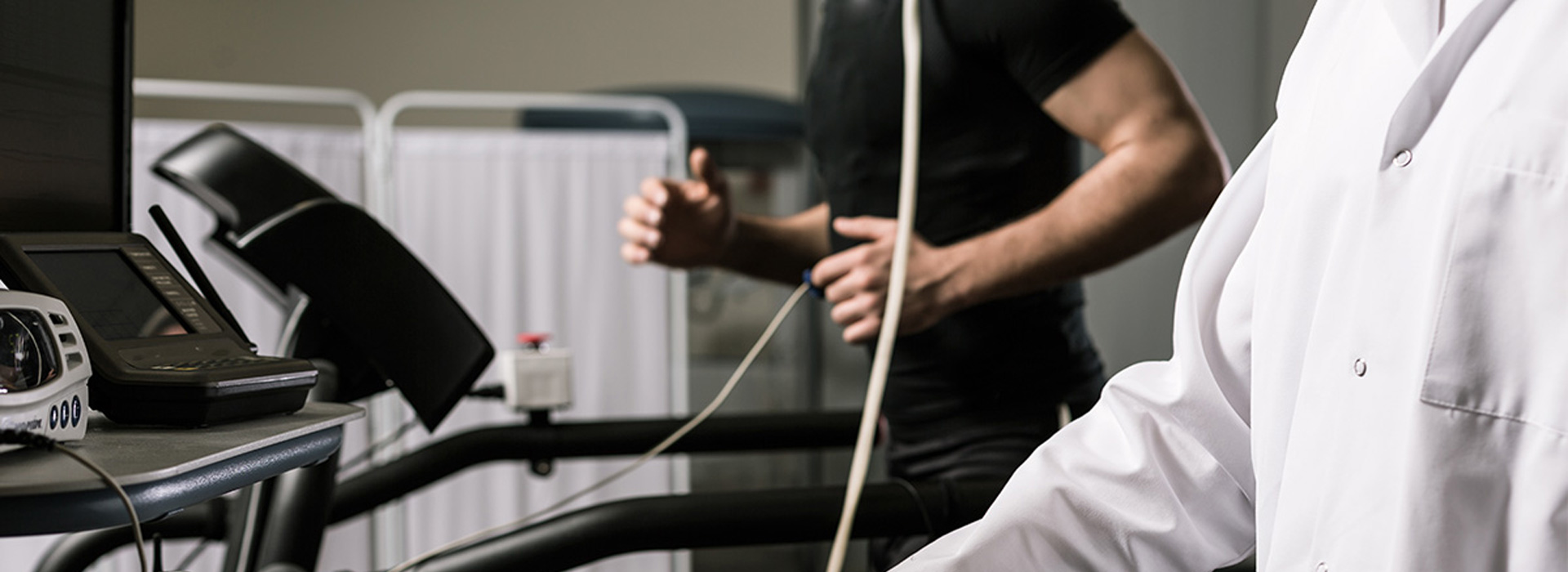
Exercise Test
What is Exercise Testing?
The Exercise Test is a noninvasive test, used both for initial diagnosis and long-term monitoring of cardiac function. The Exercise Test is based on recording the electrical activity of the heart with an electrocardiogram during the patient's exercise. The aim of the examination is to assess the patient's functional capacity, to identify symptoms of angina pectoris, to record electrocardiographic findings of myocardial ischemia and to identify any arrhythmias that require further investigation.
It is an examination, which must be done in a safe environment (presence of drugs, defibrillator) and by an experienced doctor to minimize possible complications. Also, it is necessary to be preceded by a clinical examination by the cardiologist, as the Exercise Test is not indicated for all patients. The examination is strongly recommended for people without symptoms who, however, have an increased risk of suffering from coronary heart disease, due to the existence of predisposing factors, the main of which are smoking, obesity, increased cholesterol and triglycerides, diabetes mellitus, severe family history, severe stress and hypertension.
Why should I take the exam?
The Exercise Test is mainly used as a noninvasive test in the diagnosis of coronary artery disease, but mainly in the monitoring of coronary artery disease after a cardiac event, such as, e.g. after myocardial infarction or after percutaneous coronary intervention (PCI) or after coronary artery bypass grafting (CABG).
In addition to diagnosing myocardial ischemia (electrocardiographically), Exercise Testing provides important information on functional capacity, exercise tolerance, blood pressure response to exercise, and the potential for exercise-induced arrhythmias.
How is it done?
In the Exercise Test, in a suitably equipped area, the examinee is subjected to controlled physical exercise (walking on a treadmill), during which the electrocardiogram and blood pressure are continuously monitored, while potential discomforts that may be reported during the exercise are evaluated as well as after her.
We attach a series of cables (electrodes) to the examinee with adhesive tapes and then he climbs onto the moving treadmill. At first the exercise is easy and progressively becomes more intense, as determined by the protocol followed. The most popular is the Bruce protocol which consists of stages, each lasting 3 minutes.
The time of the examination is mainly determined by the patient's endurance until the appearance of fatigue and according to the reactions and measurements observed by the cardiologist. From a diagnostic point of view and regardless of the examinee's physical condition, the supervising cardiologist can stop the examination when the heart rate reaches the maximum predicted Heart Rate for the examinee's age (HRMax), which is approximately determined by the mathematical formula HRMax = 220 - age bpm (Beats Per Minute). For example, the BPM for a 40-year-old patient would be 220 - 40 = 180 beats per minute, while for a 65-year-old patient it would be 220 - 65 = 155. An averagely fit normal person 35-50 years old can usually last up to 10 minutes on the mat, while people in good physical condition can exceed 12 minutes on the Bruce protocol. The supervising cardiologist may, if deemed necessary by the diagnostic findings, terminate the test even at a very early stage.


